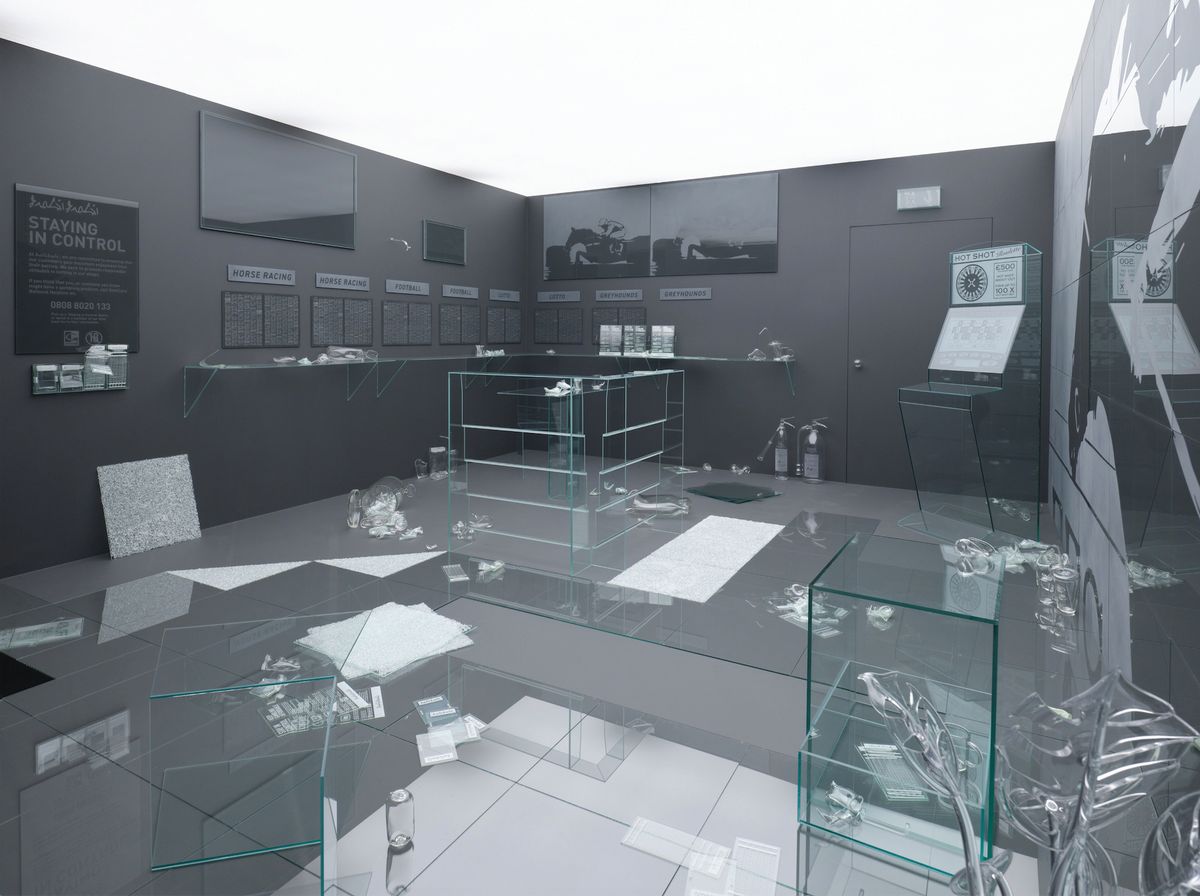Move over, Venice! Along with La Serenissima, the city of Sunderland in England’s north east has also been a renowned centre for glass production since 674AD, when craftsmen from Gaul were brought over by Saint Benedict Biscop to make the first stained-glass window in England for St Paul’s church in Monkwearmouth. The Frenchmen passed on their skills to the locals and over the centuries the area became a world supplier of glassware. In its mid-19th-century heyday, Sunderland had more than 1,000 glassmakers working for 20 different companies trading goods across the globe.
Now this glassy heritage is being celebrated, with four leading contemporary artists—Ryan Gander, Monster Chetwynd, Pascale Marthine Tayou and Katie Paterson—being commissioned by the National Glass Centre in Sunderland to produce a series of ambitious projects that demonstrate the scope and potential of this most ancient medium. “The idea is that an artist works with these renowned glass craftspeople; it’s almost like an apprenticeship scheme,” says Gander, who has created an entire life-sized betting shop and its contents in glass in an abandoned shopfront in Sunderland city centre.
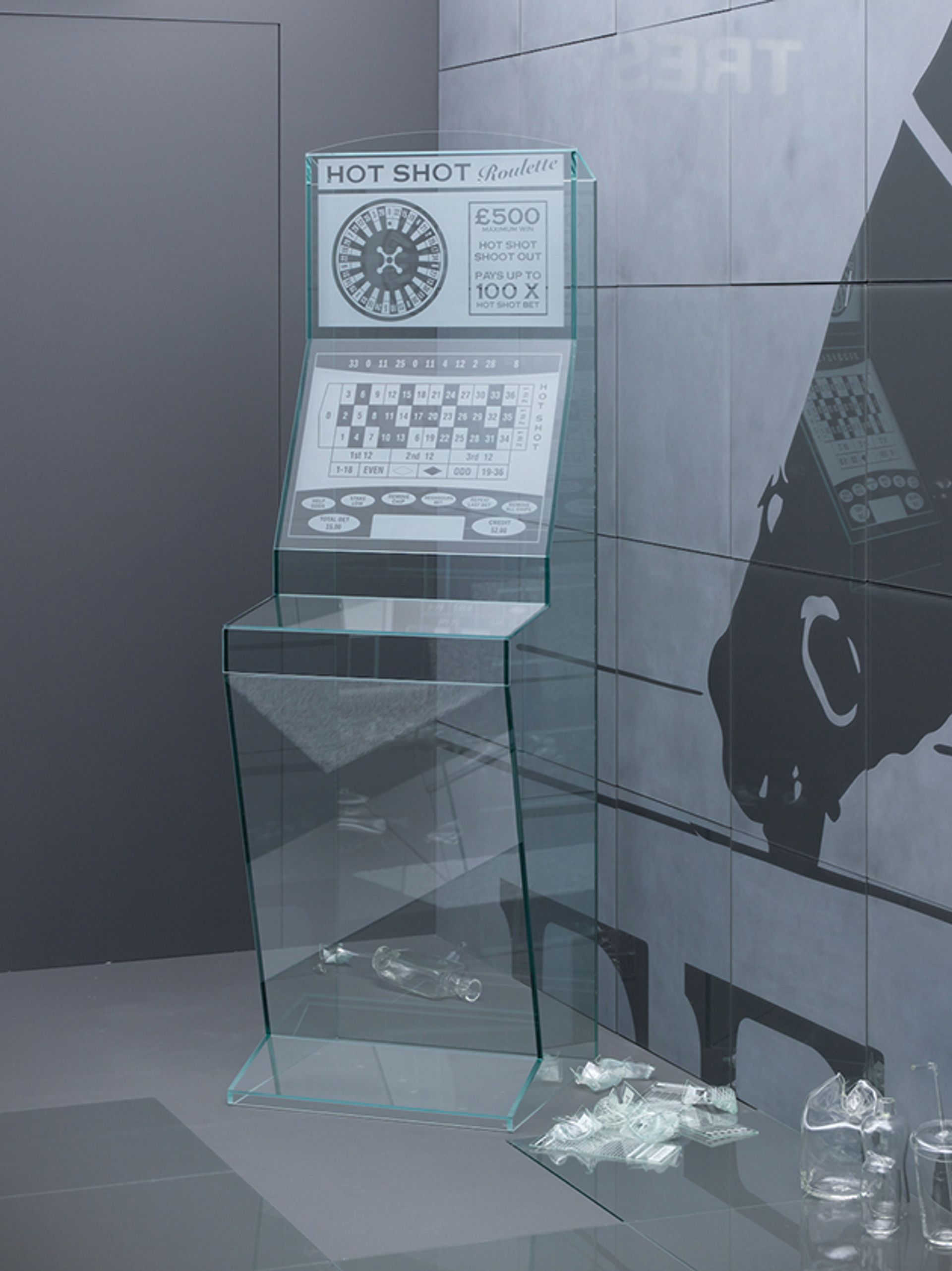
Ryan Gander's Ghost Shop (2022). Photo: George Darrell; © Ryan Gander; courtesy of the artist and the National Glass Centre, Sunderland
Gander’s deserted glass Ghost Shop is a technical tour de force with all fixtures and fittings, including fire extinguishers, posters, betting slips, a wastepaper bin and even carpet tiles all rendered in various permutations of plain, clear glass. “Everything was made from glass or UV-treated invisible glass glue,” he says, “so it really is like a mirage, as if somebody has just sucked all the colour out of the real world.”
Gander sees his spectral shop as a comment on the decline of the British high street, declaring: “I wanted to choose something that had no physicality and the weird thing about betting shops is that there isn’t anything there: nothing is tangible. Betting shops are like an exchange of an idea or the potential of something ,which is also what conceptual art is,” he notes. Both metaphorically and physically this most immaterial of establishments therefore seemed especially appropriate to be rendered in the medium of glass, which, according to Gander, is similarly lacking in substance. “Glass is about absence and what’s not there and it’s also see-through, rather like our consciousness as we walk past betting shops, looking straight through them and not noticing or beingreminded of horrible addiction they support and the way in which they manipulate people," he says. The artist also admits that the piece has a more straightforward documentary edge: “I noticed there were just loads and loads of empty betting shops in Sunderland. And so I thought, as art mimics life, let’s be true to the reality.”
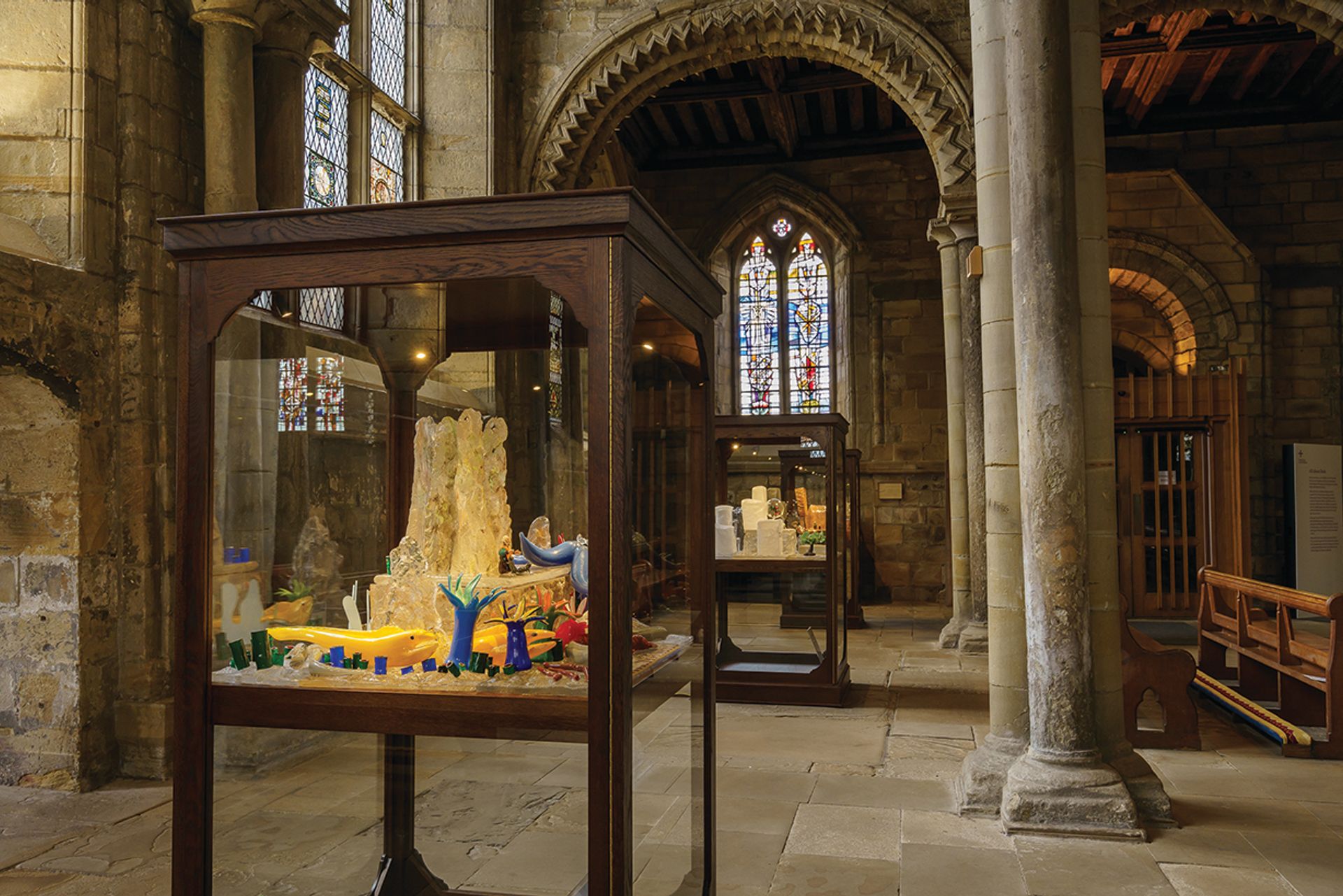
Installation view of Monster Chetwynd's The Life of St Bede (2022) at Durham Cathedral. Courtesy of National Glass Centre, Sunderland.
In the rather more illustrious setting of nearby Durham Cathedral, Chetwynd’s installation, The Life of St Bede, commemorates local saints St Bede and St Cuthbert in four vivid glass dioramas, each housed in large vitrines in the cathedral’s Galilee chapel. These mise-en-scènes present the saints in fantastical landscapes dwarfed by crystalline crags and giant cartoonish flowers, insects and creatures of the sea. Also in Durham Cathedral, as well as in Sunderland’s National Glass Centre, Paterson is using her glass commission to tell the story of the earth. With the help of local glass expertise she has made The Moment, a series of hand-blown hourglasses that, in keeping with this artist’s penchant for giving material form to mind-boggling imponderables, contain material dating from before the sun existed. Another piece consists of a glass "Requiem" urn filled with a dust that spans billions of years, including the few millennia of our human existence—a mere blip in the history of the planet.
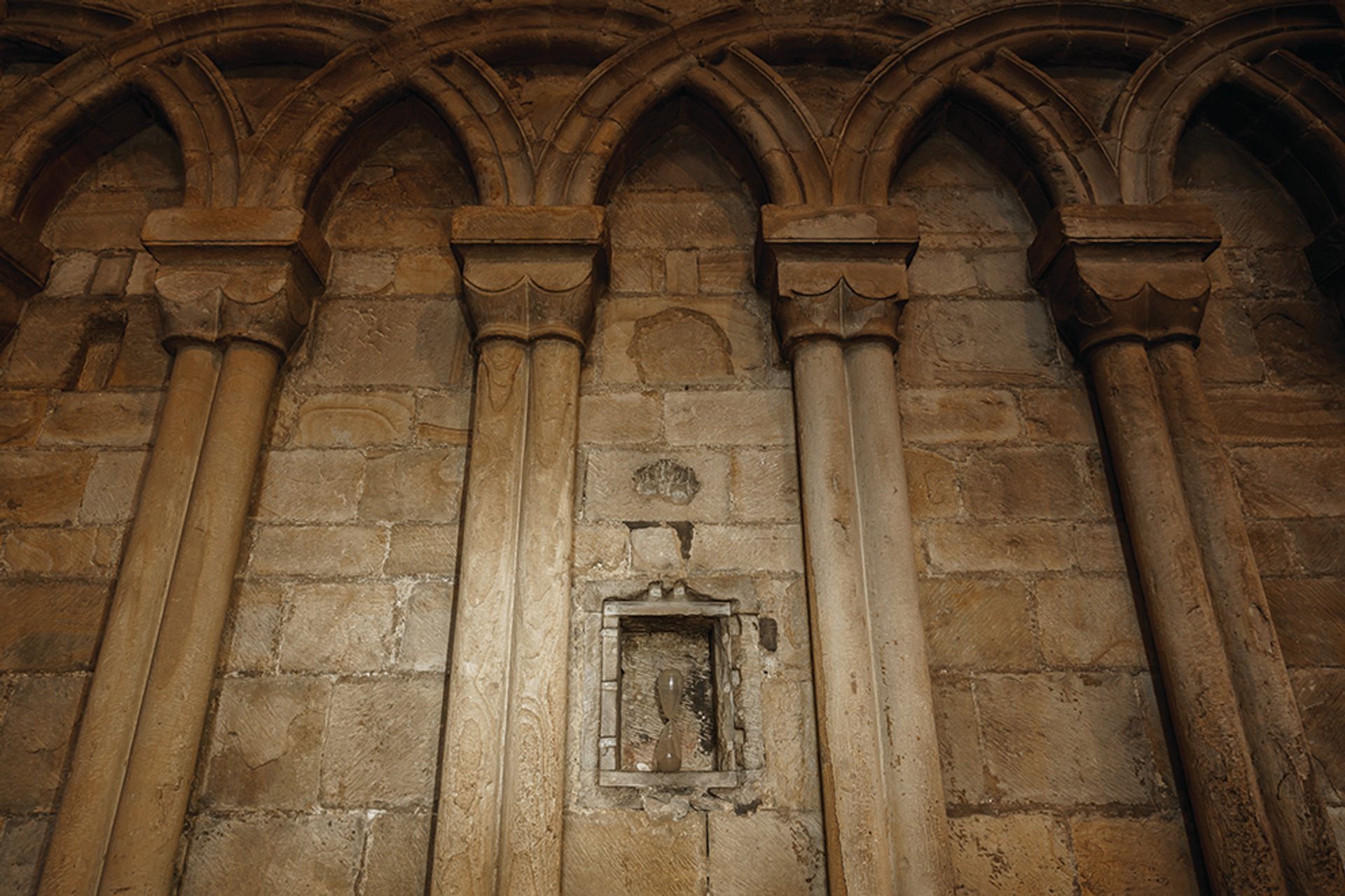
Katie Paterson's hourglasses installed in Durham Cathedral.
And Pascale Marthine Tayou’s Colonial Ghost, consisting of 12 Christian crosses each formed from five human figures held in place by prominent nails, first went on show earlier this year at Sunderland Minster. The ecclesiastical setting forcibly underlined this trenchant comment on the connections between colonisation and the growth of Christianity in African countries. But in their current setting of the National Glass Centre these doll-like figures, clad in their brightly coloured, incongruously contemporary clothes and uniforms, still pack a disquieting punch—especially in the knowledge that the region’s industrial wealth was in great part derived from its international trade in glass while also being inextricably combined with Britain’s expansion as an Imperial superpower
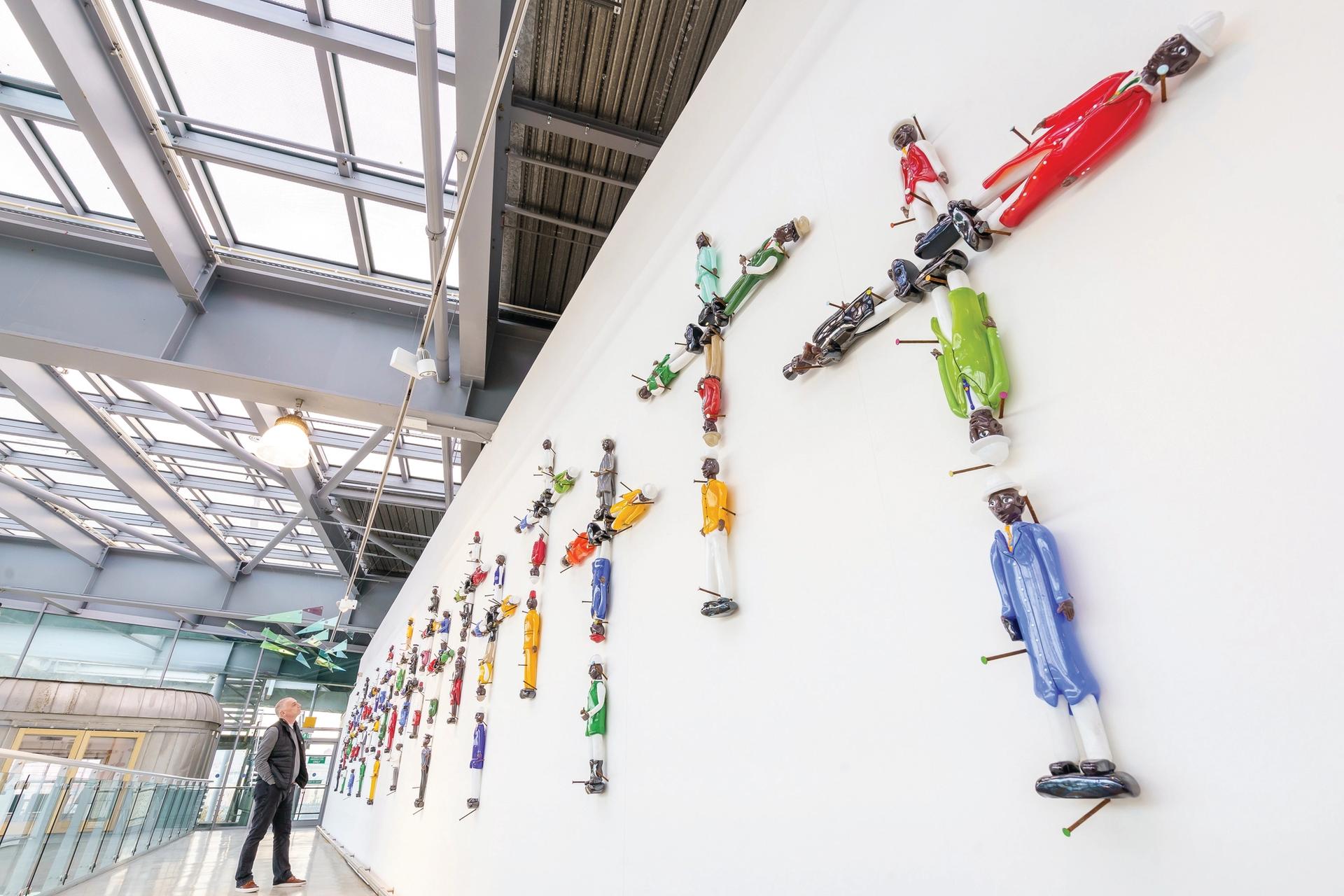
Pascale Marthine Tayou’s Colonial Ghost sculptures (2021) at the National Glass Centre, Sunderland.
Given the strength of these Sunderland Glass Exchange commissions, let’s hope that they become a regular fixture along the lines of the Fondazione Berengo’s Glasstress exhibition in Venice. Since being launched in 2009 by Adriano Berengo on the Venetian island of Murano, Glasstress has offered hundreds of leading international contemporary artists, including Cornelia Parker, Olafur Eliasson, Mona Hatoum, Laure Provost and Kiki Smith, the opportunity to work with the city’s greatest glass maestros. Marthine Tayou was a Glasstress participant in 2015 and Gander is in this year’s line-up, where, alongside the likes of Vanessa Beecroft, Ai Weiwei, Thomas Schütte, Rose Wylie and the late Jimmie Durham, he will be exhibiting a sculpture of a classic American Adirondacks reclining chair, wrought in crystal glass, upended and covered in a fine powdering of crystal ‘snow’. While very different from a Sunderland betting shop, it also uses the unique magic of glass to transform a familiar, everyday image into something dysfunctional, poetic and uncanny.
• Glass Exchange, National Glass Centre, Sunderland and various venues until 11 September
• Glasstress, Fondazione Berengo Art Space, Murano, 2 June-27 November


